Research Articles
Reviews
Issue Editorial Board
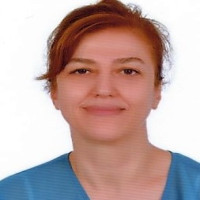
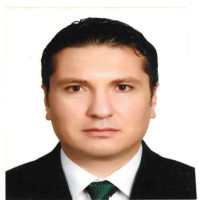



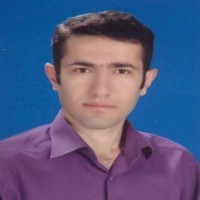

He was born in Amasya in 1977. He graduated from Gazi University, Department of Electrical Education in 2002. He started working as a lecturer at Selçuk University in the same year. He completed his master's degree in Electrical and Electronics Engineering at Selçuk University, Institute of Science and Technology in 2009. He received his PhD from Konya Technical University, Graduate Education Institute, Department of Electrical and Electronics Engineering in 2019. He has been working as an Assistant Professor at Selçuk University, School of Civil Aviation, Department of Aviation Electrical and Electronics since 2020. His main areas of interest are Avionic Systems, Embedded Systems, and Measurement Systems.
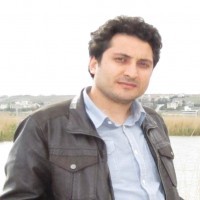

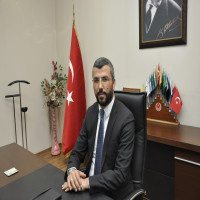
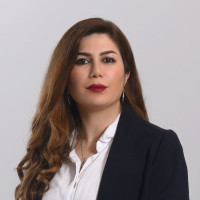
In 2008, Zohre Ahmadi began his bachelor in Materials Science and Engineering at University of Tabriz, Iran. She continued her education in the master program at the University of Tabriz in 2013. She worked as a R&D laboratory manager between 2015-2016 in Aras Sanitary Ware Ind. P.J.S. After that, she began his studies in the doctoral program at the Materials and Energy Research Center, Iran, in 2017. Zohre has been involved in several research projects. She has been recognized among the top 2% of researchers worldwide in the citation ranking for three consecutive years (2020-2022) published by Stanford University and Elsevier. she Currently focuses on the following topics: - Ultra High Temperature Ceramic and Composites - Advanced Sintering Methods -Powder Metallurgy - Materials Characterization. She became a Faculty Member at the Kyrenia University in October 2022 and currently teaching and researching as an Assistant Professor at the University of Kyrenia.
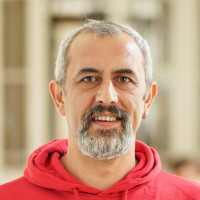
Prof Raj Das leads the ‘Simulation and Modelling’ team in the Department of Aerospace Engineering at RMIT University in Australia. He has also an adjunct academic in the University of Auckland (New Zealand) and the University of Quebec (Canada). He is a principal investigator of the ‘Sir Lawrence Wackett Aerospace Research Centre’ of RMIT University. He is the Chair of the ‘National Committee on Applied Mechanics’ of Engineers Australia, Vice President of the ‘International Congress on Fracture’ and past President of the ‘International Committee on the Mechanical Behaviour of Materials’.
Prof Das has published more than 350 papers in international journals and conferences. Prof Das has a PhD from Monash University, Australia in Structural Optimisation and Failure Analysis. Prof Das has previously worked in the University of Auckland, the Commonwealth Scientific and Industrial Research Organisation (CSIRO), and the University of Manchester.
Prof Das has research capabilities in advanced materials, such as metamaterials, auxetic materials, architected materials, composite materials, topology and shape optimisation for materials and structural designs, computational modelling, fracture mechanics, dynamic fracture, damage tolerance based optimisation, numerical modelling and multi-scale analysis using finite element and mesh-less methods, impact behaviour and failure analysis of metals, ceramic and composite materials. Prof Das has been extensively promoting applied mechanics, computational mechanics and fracture mechanics research within the Australasian region. He was the chair of four major scientific conferences recently held in Australia and New Zealand. He has served on the scientific committees of more than 100 international conferences. Prof Das is on the editorial board and review panel of several journals and funding agencies.
Prof Das has been granted several national and international awards and fellowships, including the ‘Jim & Hazel D. Lord Emerging Faculty Fellowship’, ‘Research Excellence Award’, and ‘AUEA Emerging Researcher Award’ by the University of Auckland. He has received the ‘CONICYT award’ from the Government of Chile, ‘Certificate of Merit Award’ from the International Association of Engineers, Hong Kong, ‘UQAC Visiting Fellowship’ from the University of Quebec, Canada, and ‘Visiting Researcher Fellowship’ from the University of Cape Town, South Africa.
Dr. Evan R. Ward is Professor of History at Brigham Young University, located in Provo, Utah, in the United States. He is the author of three books, including, Hubbing for Tourists: Airports, Hotels, and Tourism Development in the Indo-Pacific, 1934-2019 (Berlin: Degruyter Brill Publishing, 2023). He teaches courses on tourism, economic development, and world history.
https://www.ku.ac.ae/college-people/simon-c-m-yu
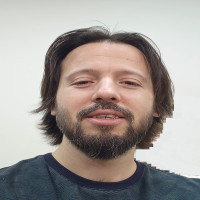
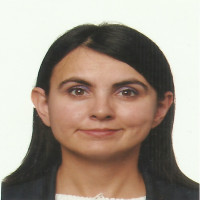


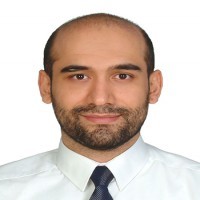






Aim & Scope
The International Journal of Aeronautics and Astronautics is a double-blind peer-reviewed (reviewed by at least two reviewer), open access and online journal, covering all areas of aviation management and technology. It is an interdisciplinary journal focused on original articles, essays/reviews, letters to the editor, case reports, book reviews and scientific translations, aiming to contribute to the field of aviation management and technology in Türkiye and in the world. Journal publication languages are English and Turkish. The journal accepts manuscript in every publication period.
The articles in the journal are aimed at researchers, practitioners and undergraduate/graduate students who are interested in all the main elements of the aviation industry (airlines, airports, air traffic management, aircraft engineering, mechanical engineering, avionics engineering, etc.).
The journal presents studies on the following topics under the main areas of social and technology:
Social Sciences
Safety Management Systems, Air Traffic Management, Air Transportation Management, Airport Planning and Management, Aviation Management, Aviation Physiology, Aviation Security, Aviation Law, Aviation Meteorology, Aviation Psychology, Aviation Sector Studies, Aviation History, Aviation Safety and Security Management, Financial Management in Aviation, Human Resources Management in Aviation, Aviation Logistics Management, Organizational Behavior in Aviation, Aviation Marketing Management, Risk Management in Aviation, Ground and Cabin Services in Aviation, Airport Design, Airline Industry/Commercial Aviation, Airline Management, Flight Operations Management.
Technology
Aerodynamics, Aeroelastic Analysis and Design, Fluid Mechanics, Avionic Systems, Multidisciplinary Design Optimization, Aircraft Maintenance and Repair, Aircraft Propulsion Systems, Aviation Rules, Aviation Materials, Aviation Training, Aviation and Artificial Intelligence, Aviation Structures, Human Factors in Aviation, Helicopter Design, Computational/Experimental Fluid Dynamics/Mechanics, Heat Transfer and Combustion, Unmanned Aerial Vehicles, Navigation Systems, Measurement and Modeling, Aircraft Airframe Engine and Maintenance, Aircraft Performance, Aircraft Design, Flight Mechanics, Flight Dynamics and Control, Satellite Technologies, Gas Turbine Engine, Aviation Oils and Fuels, Aircraft Engine, Other Aircraft and Technologies.
Author Guidelines
Guidelines for authors
First of all, you need to register with the Turkish Journal Park system. You can submit your article through your user page at https://dergipark.org.tr/en/register/
YOU CAN ACHIEVE TO EXAMPLE MANUSCRIPT TEMPLATE.
You must prepare your manuscript according to the following rules.
* The title of the article must be 14 points.
* The title of the article must include the name(s) of the author(s) and the full affiliation(s), title, and mailing address of the person to whom all correspondence should be addressed after the title. The author(s) must also include their ORCID number before the abstract section.
* The abstract must be written in English and Turkish and should be 150-250 words long.
* There must be a maximum of 5 keywords. (Capital letters at the beginning of each keyword, semicolon between keywords, and keywords must be in alphabetical order).
* Abstracts and manuscripts should be double-spaced in 12-point Times New Roman font.
* The manuscript must be prepared as a single column.
* Main sections and sub-sections should be numbered consecutively.
* All references listed at the end of the paper should be cited in the main text using numbers in square brackets, e.g. [1, 2-5].
* Tables should be in 12-point font. If necessary, they may be in a smaller point size.
* Figures must have a minimum resolution of 300 dpi. Black and white or colored figures are acceptable.
* Each table and figure should be cited in the text.
* Equations must not be images or pictures. They must be prepared in the Office Word equation editor.
* Nomenclature and abbreviations may be presented as a table.
* Turkish publications must include an extended English abstract of at least 15% of the manuscript word count. The Extended English Abstract should be a holistic text that includes the purpose, scope, theoretical framework, methodology, findings, and results of the study and should include all relevant parts of the article. The Extended Abstract should be placed at the end of each article, just before the References section.
Authorship Contribution Statement for the Contributor Roles Taxonomy
The Contributor Roles Taxonomy has been introduced to recognize individual authors' contributions, reduce authorship disputes, and facilitate collaboration. The corresponding author is responsible for ensuring that the descriptions are accurate and agreed upon by the authors. For example;
İlker Örs: Writing - original draft, Investigation, Visualization, Supervision, Conceptualization, Methodology, Software, Formal analysis. Murat Ciniviz: Investigation, Supervision, Writing – review & editing. Savaş Yelbey: Investigation, Visualization, Supervision. Bahar Sayın Kul: Conceptualization, Methodology, Software, Formal analysis.
Conflicts of interest: The author(s) clearly state whether there is any conflict of interest.
For studies requiring ethics committee approval, information about the approval (name of the committee, date, and issue number) should be included in the Methods section and on the first/last pages of the manuscript.
References
References must show in the text as single reference [1], multi-reference [1, 4, 8, 10], if references are consecutive [1-5], it is expressing 1, 2, 3, 4, and 5 number references. References must be numbered according to the order of use in the manuscript. References must be size 12pt. All references must show their original language.
Reference to a journal publication:
Last name, Initial. Publishing year. Publishing name. Journal Name, Volume(Issue), pages.
Örs, İ., Ciniviz, M. and Sayın, B. 2016. Using of biofuel – diesel fuel blends in a diesel engine. Internal Journal of Energy Applications and Technologies, 4(1), 223-234.
Örs, İ. and Ciniviz, M. 2019. Renewable energy systems in Turkey. Internal Journal of Energy Applications and Technologies, 4(1), 223-234.
Örs, İ. 2018. The production of biodiesel from safflower seed oil. Internal Journal of Energy Applications and Technologies, 4(1), 223-234.
Reference to a book:
Last name, Initial. Book name, Edition number, Publisher, Place Published, Year.
Ors, I., Ciniviz, M. and Sayın, B. Using of biofuel – diesel fuel blends in a diesel engine, Fourth edition, AcademicPaper, Turkey, 2000.
Reference to a chapter in an edited book:
Last name, Initial. (Section author(s)), Section name, in: Editor(s)/Author(s) of book, Book Name, Edition number, Publisher, Place Published, Year, pages.
Ors, I., Ciniviz, M. and Sayın, B. Diesel engines, in: Kahraman, A., Oguz, H., Internal Combustion Engines, Second edition, AcademicPaper, Turkey, 2000, 158-172.
Reference to a Master or Ph.D. thesis:
Last name, Initial. Year. “Thesis name”. Master/Ph.D. thesis, University/Institute/Faculty, City, Country, pages.
Ors, I. 2000. “Using of biofuel – diesel fuel blends in a diesel engine”. Ph.D. thesis, Selcuk University, Graduate School of Natural Sciences, Konya, Turkey, 66-95.
Reference to a conference presentation (in the conference proceedings):
Last name, Initial. Publishing year. Presentation name. Organization/Conference/Symposium Name, Organization dates, Volume(Issue), City, Country, pages.
[1] Ors, I., Ciniviz, M. and Sayın, B. 2016. Using of biofuel – diesel fuel blends in a diesel engine. International Conference on Advanced Technology & Sciences, 23-25 November, 4(1), Rome, Italy, 223-234.
Reference to a web page/site:
Author, Title, Year|. URL. (Accessed Access Date Access Year).
[1] Örs, İ., The article, 2016. https://dergipark.org.tr/ijeat/issue/27866/294888.(18 March 2020).
Ethical Principles and Publication Policy
International Journal of Aeronautics and Astronautics accepts and applies the Personal Data Protection Principles accepted by Turkish Dergipark.
Twin publishing is the publication of the same article or substantially similar articles in more than one journal. The editor returns this type of article without review. After that, the editor may impose an embargo on the author attempting to twin publishing for a certain period of time, explain this situation to the public in the journal in which the author has previously published (perhaps as a simultaneous announcement with the editor of the journal that published the previous article), or apply all of these measures together.
Authors cannot submit the same manuscript to more than one journal at the same time. The editor reserves the right to consult the other editor(s) receiving the manuscript if it learns of possible simultaneous submission. In addition, the editor may return the article without review or reject it without considering the reviews, or take this decision by discussing it with the other relevant editor(s) and may decide not to accept manuscript submissions from the authors for a certain period of time. It can also write to the authors' employers or implement all of these measures together.
When readers notice a major error or inaccuracy in an article published in the International Journal of Aeronautics and Astronautics, or have any complaints about editorial content (plagiarism, duplicate articles, etc.), they can send an e-mail to ijaa@selcuk.edu.tr. can make a notification.
1. Turkish Press Law,
2. Law on Intellectual and Artistic Works of Turkish,
3. Higher Education Institutions Scientific Research and Publication Ethics Directive of Turkish,
4. Committee on Publication Ethics (COPE),
5. Council of Science Editors (CSE),
6. World Association of Medical Editors (WAME),
7. International Committee of Medical Journal Editors (ICMJE)
An ethics committee approval must be obtained for research conducted in all disciplines including social sciences and for clinical and experimental studies on humans and animals, requiring ethical committee decision, and this approval should be stated and documented in the article.
It should be indicated in the journal and/or web page under a separate heading referring to national and international standards.
Information on the ethical rules under separate headings should be provided under this heading, for the peer-reviewers, authors and editors.
It should be stated that the articles comply with Research and Publication Ethics.
Reference to international standards and institutions should be made. For example, scientific articles sent to journals should take into account the recommendations of the International Journal of Aeronautics and Astronautics Editors (IJAAE) and the International Standards for Editors and Authors of COPE (Committee on Publication Ethics).
In studies requiring ethical committee permission, information about the permission (board name, date and issue number) should be included in the method section and on the first/last page of the article.
For the scales used in data collection, the permission of the scale owner should be obtained and declared in the article.
Copyright regulations must be observed for the ideas and works of art used.
1) All kinds of research conducted with qualitative or quantitative approaches that require data collection from participants using questionnaires, interviews, focus group work, observation, experimentation, interview techniques,
2) Using human and animals (material / including data) experimental or other scientific purposes,
3) Clinical studies on humans,
4) Clinical studies on animals,
5) Retrospective studies in accordance with the law on protection of personal data.
Statement Form for studies that do not require Ethics Committee Permission, click to form
Price Policy
Free
International Journal of Aeronautics and Astronautics is licensed under a Creative Commons Attribution-NonCommercial 4.0 International License (CC BY NC).

